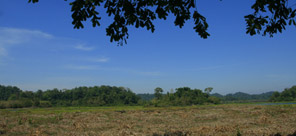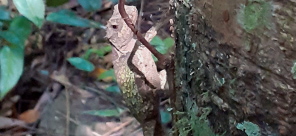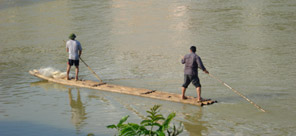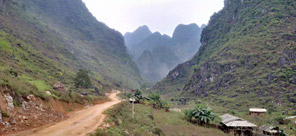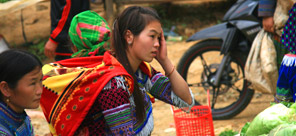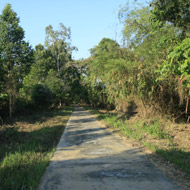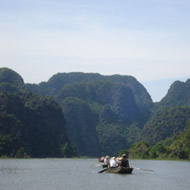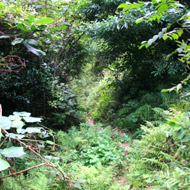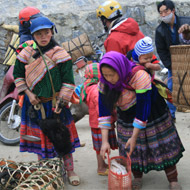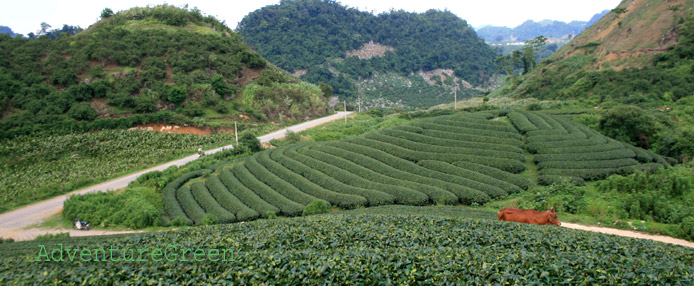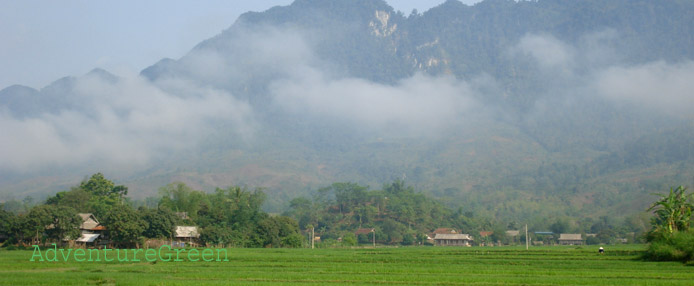Birds of Vietnam, Bird Species in Vietnam
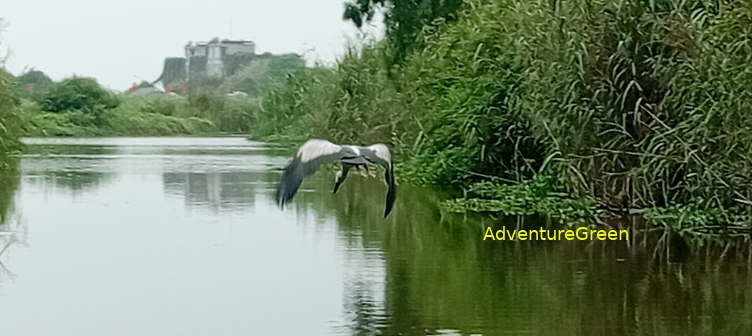
Let's join AdventureGreen on our bird quests to learn about the different birds and bird species in Vietnam. Here you can find out more about the birding spots that these bird species are found.
- Order: Passeriformes
- Family: Muscicapidae
Cyornis is a genus of passerine birds belonging to the Old World flycatcher family Muscicapidae.
1/ Hainan blue flycatcher (Cyornis hainanus, Đớp ruồi xanh hải nam)
2/ Pale blue flycatcher (Cyornis unicolor, Đớp ruồi xanh nhạt)
3/ Indochinese blue flycatcher (Cyornis sumatrensis)
4/ Chinese blue flycatcher (Cyornis glaucicomans)
5/ Blue-throated Flycatcher (Cyornis rubeculoides)
6/ Hill blue flycatcher (Cyornis whitei)
7/ Brown-chested jungle flycatcher (Cyornis brunneatus, Đớp ruồi rừng rậm ngực nâu)
Muscicapidae: Muscicapa comes from the Latin musca meaning a fly, and capere to catch.
Cyornis combines the Ancient Greek kuanos meaning "dark-blue" with ornis meaning "bird".
- Order: Passeriformes
- Family: Muscicapidae
Leucoptilon is a genus of passerine birds belonging to the Old World flycatcher family Muscicapidae.
leucos Ancient Greek λευκός (leukós, “white”).
ptilon: shown by the alternative form ψίλον (psílon), relation to πέτομαι (pétomai, “to fly”)
ptilo- : down : feather
1/ white-tailed flycatcher (Leucoptilon concretum)
Latin, English. concretum [concreti] N noun. concrete
- Order: Passeriformes
- Family: Muscicapidae
Muscicapa is a genus of passerine birds belonging to the Old World flycatcher family Muscicapidae.
1/ Asian brown flycatcher (Muscicapa dauurica, Đớp ruồi nâu)
2/ Dark-sided flycatcher (Muscicapa sibirica, Đớp ruồi Sibêri)
3/ Grey-streaked flycatcher or grey-spotted flycatcher (Muscicapa griseisticta)
4/ Ferruginous flycatcher (Muscicapa ferruginea, Đớp ruồi đuôi hung)
5/ Brown-breasted flycatcher or Layard's flycatcher (Muscicapa muttui, Đớp ruồi ngực nâu)
6/ Brown-streaked flycatcher (Muscicapa williamsoni)
The word Muscicapa comes from the Latin musca, a fly and capere, to catch.
- Order: Passeriformes
- Family: Muscicapidae
- Genus: Muscicapa
Gray-streaked flycatcher or grey-spotted flycatcher
(Muscicapa griseisticta)
The grey-streaked flycatcher or grey-spotted flycatcher (Muscicapa griseisticta) is a small passerine bird of the genus Muscicapa in the Old World flycatcher family Muscicapidae.
The bird breeds in north-east China, North Korea and south-east Siberia.
Muscicapa is a genus of passerine birds belonging to the Old World flycatcher family Muscicapidae.
The word Muscicapa comes from the Latin musca, a fly and capere, to catch.
griseisticta Latin griseus grey; Greek stiktos spotted (stizo to tattoo).
- Order: Passeriformes
- Family: Muscicapidae
- Genus: Muscicapa
Ferruginous flycatcher
(Muscicapa ferruginea, Đớp ruồi đuôi hung)
The ferruginous flycatcher (Muscicapa ferruginea) is a species of bird in the family Muscicapidae.
The bird is native to the eastern Himalayas, the Purvanchal Range and central/southern China; winters to Hainan and Southeast Asia.
The word Muscicapa comes from the Latin musca, a fly and capere, to catch.
ferruginea Latin ferrugineus rusty-coloured, ferruginous (ferrugo, ferruginis iron rust).
- Order: Passeriformes
- Family: Muscicapidae
- Genus: Muscicapa
Brown-breasted flycatcher or Layard's flycatcher
(Muscicapa muttui, Đớp ruồi ngực nâu)
The brown-breasted flycatcher or Layard's flycatcher (Muscicapa muttui) is a small passerine bird in the flycatcher family Muscicapidae.
The species breeds in north eastern India, central and Southern China and northern Burma and Thailand, and migrates to southern India and Sri Lanka.
The word Muscicapa comes from the Latin musca, a fly and capere, to catch.
- Order: Passeriformes
- Family: Muscicapidae
- Genus: Muscicapa
Brown-streaked flycatcher (Muscicapa williamsoni)
The brown-streaked flycatcher (Muscicapa williamsoni) is a species of bird in the family Muscicapidae.
The bird is found in southern Myanmar, southern Thailand, northern peninsular Malaysia, and northeast Borneo.
The word Muscicapa comes from the Latin musca, a fly and capere, to catch.
- Order: Passeriformes
- Family: Muscicapidae
- Genus: Muscicapa
Asian brown flycatcher
(Muscicapa dauurica, Đớp ruồi nâu)
The Asian brown flycatcher (Muscicapa dauurica) is a small passerine bird in the flycatcher family Muscicapidae.
The specific dauurica refers to Dauria, an area of south-eastern Siberia named after a local nomadic tribe.
This is an insectivorous species which breeds in Japan, eastern Siberia and the Himalayas. The bird is migratory and winters in tropical southern Asia from southern India and Sri Lanka east to Indonesia.
Traits:
- Partial white-eyeringed;
The word Muscicapa comes from the Latin musca, a fly and capere, to catch.
daurica, dauricus, dauurica, dauuricae, dauuricus Dauria, south-eastern Siberia (after the Dauuri or Dag( uuri, a nomadic Mongolian tribe that inhabited the area).
- Order: Passeriformes
- Family: Muscicapidae
- Genus: Muscicapa
Dark-sided flycatcher
(Muscicapa sibirica, Đớp ruồi Sibêri)
also Siberian flycatcher or sooty flycatcher
The dark-sided flycatcher (Muscicapa sibirica) is a small passerine bird belonging to the genus Muscicapa in the Old World flycatcher family Muscicapidae.
The bird's wintering range includes north-east India, Bangladesh, southern China, Taiwan and South-east Asia as far as Sumatra, Java, Borneo and the Philippines (Palawan and Culion).
Traits:
- Partial white-eyeringed;
The word Muscicapa comes from the Latin musca, a fly and capere, to catch.
- Order: Passeriformes
- Family: Irenidae
Irena is the single genus in the family Irenidae, or fairy-bluebirds, small passerine bird species found in forests and plantations in tropical southern Asia and the Philippines.
Irena, Irenidae: A modern Greek spelling of the girls' name Irene, meaning 'peace'. The name is originally spelt Eirene or Eirini in Greek. In Ancient Greek Mythology, Eirene is the Greek goddess of peace.
1/ Asian fairy-bluebird (Chim lam, Irena puella)
"puella" is a Latin noun that primarily means "girl" in English.
- Order: Passeriformes
The leafbirds (Chloropseidae) are a family of small passerine bird species found in the Indian Subcontinent and Southeast Asia.
All species of the family are placed in the genus Chloropsis.
In Greek mythology, the name Chloris (/ˈklɔːrɪs/; Greek Χλωρίς Chlōrís, from χλωρός chlōrós, meaning "greenish-yellow", "pale green", "pale", "pallid", or "fresh").
From ὄψ (óps, “eye”) + -σῐς (-sis).
ópsis view sight
- Order: Passeriformes
The family Irenidae, or fairy-bluebirds, are small passerine bird species found in forests and plantations in tropical southern Asia and the Philippines.
The family has a single genus Irena and is related to the ioras and leafbirds.
Irenidae: A modern Greek spelling of the girls' name Irene, meaning 'peace'. The name is originally spelt Eirene or Eirini in Greek. In Ancient Greek Mythology, Eirene is the Greek goddess of peace.





